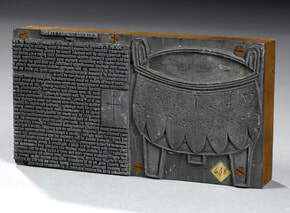Cliche
 Cliché, from French, is printer’s jargon for a ‘stereotype block’—a method of printing from a metal plate, called a stereotype, so that a print or design can be reproduced endlessly and identically or with only minor changes. The use of cliché in French to refer to a trite phrase or worn-out expression is from 1888. The word cliché came to English in the 1920s meaning any over-worked or over-used word or phrase.
Cliché, from French, is printer’s jargon for a ‘stereotype block’—a method of printing from a metal plate, called a stereotype, so that a print or design can be reproduced endlessly and identically or with only minor changes. The use of cliché in French to refer to a trite phrase or worn-out expression is from 1888. The word cliché came to English in the 1920s meaning any over-worked or over-used word or phrase.Clichés are the elephant in the room (1950s). All things being equal (1849), avoid them like the plague (1845). Better late than never (early 14th century).
It is going to be a steep learning curve (1885) but think outside the box (1975). Remember to be politically correct (1793). No pain, no gain (1734).
If nothing works, oh well, back to the drawing board (1941). Get over it (1687).
Each date indicates when the cliché first appeared in English.
Image: Stereotype, National Museum of Scotland
Reference: Online Etymological Dictionary, https://www.etymonline.com/
Fountain, N. (2012). Clichés: Avoid them like the plague! London: Michael O’Mara Books.
Published on April 17, 2022 11:24
No comments have been added yet.



